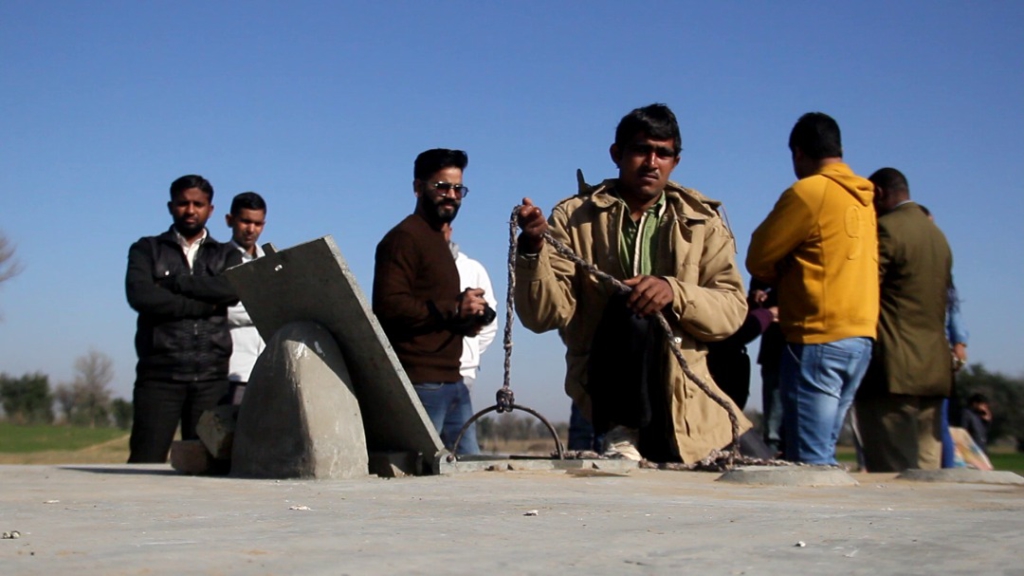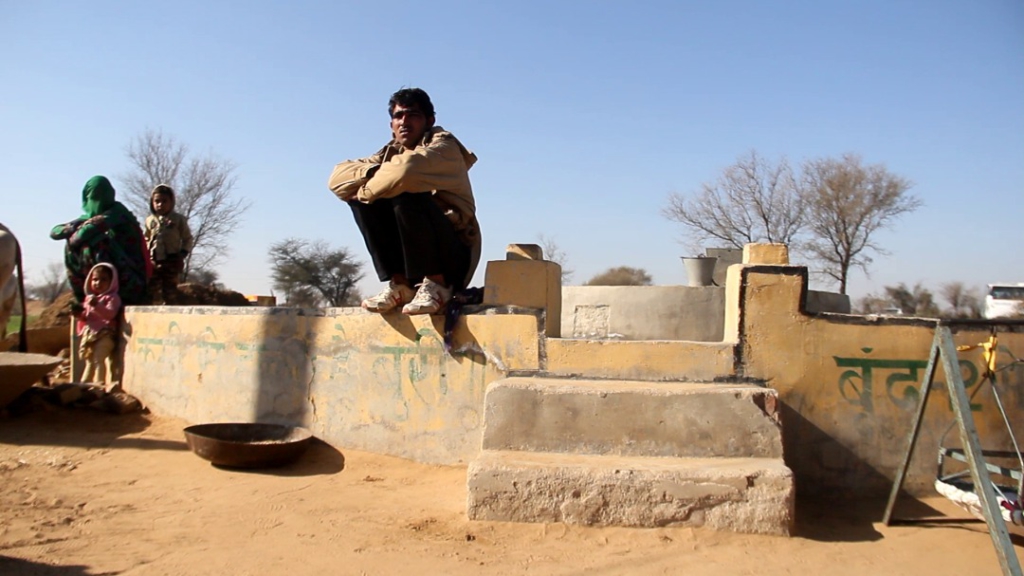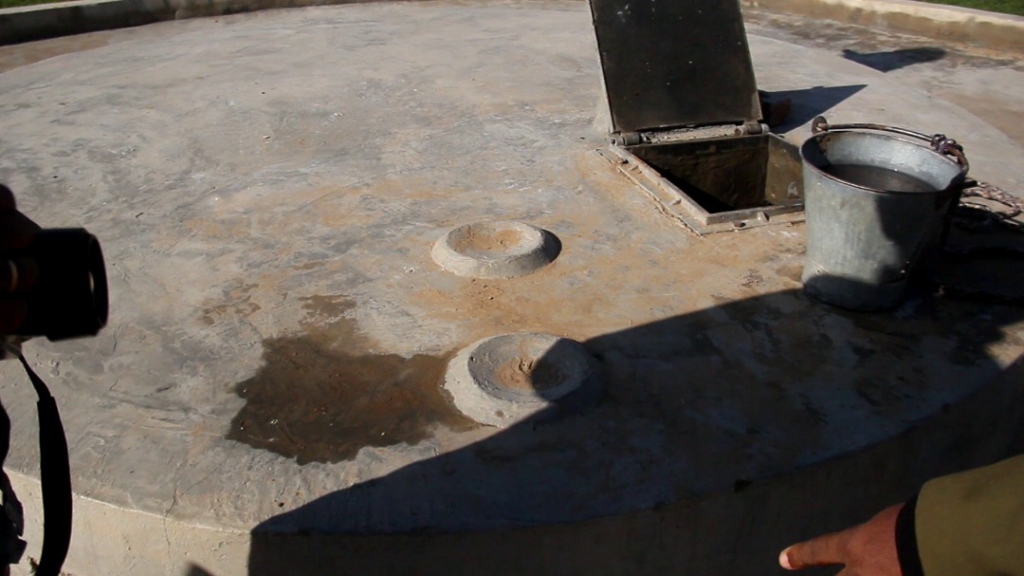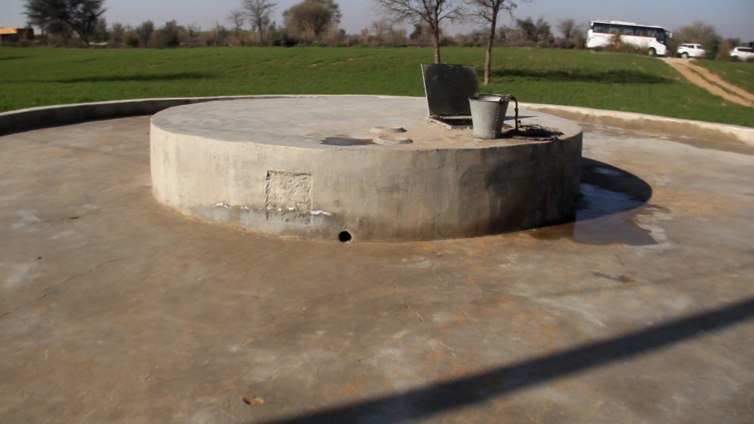Acute shortage of potable water at Churu in the Rajasthan State in India was one of the main challenges to an initiative to improve sanitation in the area.
The state is water-deficient. It has only 1% of the country’s water resources despite representing about 5% of India’s total population.
Low rainfall and water supply adversely affected agriculture and livestock production. The western part of the state was hard hit by water scarcity.
The state has a difficult geo-climatic environment with annual rainfall of only 300 mm.
The soil is sandy and rainwater rapidly gets absorbed into it.
Below the sand is a limestone layer and the groundwater is very brackish.
The state has two drinking water problems; first, the availability of water is very low and second, the quality of water is not good for consumption.

Women get exposed to hot burns and other health risks walking long distances to fetch water.
But the challenge of water supply is being addressed, after the Indian government and its partners built 20,000 litters underground reservoir for each household.
It is cylindrical asphalt underground pit where rainwater is collected from rooftops, courtyards or artificially prepared sumps.
Once fully filled, the stored water can last through the dry season and save families from daily routine of fetching water from distant locations.
There are 500 households in Baniyala Village in Churu. About 200 of the harvesting techniques have been constructed through an on-going initiative.

The community's contribution to the facility is primarily through loans provided by self-help groups.
The money collected to pay off the loan is used as a revolving fund to help more families build the system.
The loan product for rainwater harvesting structure is unique and possibly first of its kind.
Ninety percent of the cost is borne by the government.
Ram Swarop Jaht, the District Collector said the government’s priority is to provide continuous water supply to households for effective use.
“The government intends to make water available to everybody”, he said.
One of the beneficiaries in Baniyala village, Taranagar Block, Churu District, is excited about the life-changing intervention.
Lichma Devi received public funding for the construction and use a 20,000 litter capacity concrete water reservoir.
She says the availability of the reservoir in that arid village has given her family access to safe drinking water.
According to her, the incidence of waterborne diseases in the family has reduced significantly following the construction of the water reservoir.
Under the Watershed Development Program, many poor households like hers, now get a frequent supply of water.
The selection of deserving beneficiaries was a challenge, but Bhorukha Charitable Trust (BCT) had to discuss project details at village meetings.
A project implementation committee was established in all project villages for execution.
It is said that, regardless of technology advancements, the best solutions sometimes lie in the past.
And that is exactly what the Indians explored to meet the water needs of one of the driest regions of the country.
The scattered monsoon rains in Rajasthan do not make news anymore.

The State also has a high density of human and cattle population density as compared to other desert areas of the country.
Ensuring constant water supply in the Region was the only way of survival.
Crops are taken care of by stored rainwater because the system of rainwater harvesting is designed for agriculture purposes too.
The traditional method has been employed by many villagers since the 15th century.
Over the past three decades, demand for irrigation has gone up.
From open community lands, capturing water from swollen streams, and flooded rivers, water is collected and stored in various forms.
An open well with multiple owners is the most important source of irrigation. The soil dug out to make the well pit is used to construct a huge circular foundation or an elevated platform sloping away from the well.
Small earthen check dams known as Johads captures and conserves rainwater, improving percolation and groundwater recharge.
It is a system that has been in existence for many years and the country revived some 3000 Johads across over 650 villages in Rajasthan.
This has resulted in a general rise of the groundwater level by almost 6 metres and a 33 percent increase in the forest cover in the area.

According to scientists at Indian-based Centre for Science and Environment, five rivers that used to go dry immediately following the monsoon have now become perennial, "such as the River Arvari, has come alive."
Farmers produce two to three crops, which makes a systematic and scientific approach to rainwater harvesting system even more critical.
Water received from the monsoon during July and August is stored and used for crops between October and March.
Intensive farming continues to grow across the world, and the issue of reliable water supply needs to be adequately addressed for sustainable agriculture.
The massive progress made by India in water infrastructure provides opportunities for Ghana to draw important lessons to drive the growth of the agricultural sector.
The government of Ghana promised to construct 570 dams in the run-up to the 2016 general election.
Out of the number, 174 dams are currently under construction in the Northern Region, whilst 83 and 43 are being constructed in the Upper East and Upper West regions respectfully.
The dams, which are at various stages of completion, are expected to provide enough water for farmers to boost agriculture, and domestic purposes.
But the policy has not yielded the needed results due to the absence of standard dams that are fit for purpose.
Trained hydrologist and senior lecturer at the Kumasi Technical University, Dr Anthony Osei Twumasi, says integrating the rainwater harvesting system into the one village one dam could have addressed some concerns.
Dr Twumasi says areas where one village one Dam are being constructed have higher evaporation rate that cannot stand the test of time.
"If put open dam and it is not to a very high capacity, during the dry spells the water will evaporate from the dams."
He says capacities of individuals or communities should be built to have the expertise to harvest rainwater for use.
"If you have stored water, small communities can use it."
Though rooftop water harvesting for drinking purposes is not new in the five regions of the north, it is gradually losing its significance.
Dr Twumasi wants residents to revisit the old aged system to increase the availability of water in the regions.
"Policy makers should look at that area again and encourage communities to consider it as a good practice," he said.
He also believes government has a major role to play in promoting rooftop water harvesting to address water-related issues.
Dr Twumasi has firm belief that India’s experience can reduce government's burden of constructing dams, which don't benefit targeted groups of people.
"It can be used during the dry spells for agriculture purposes," he stated.
Dr Twumasi has taught for several years in areas of environmental engineering, hydro-engineering among others.
He says one of his top priorities is to get his students to understand the enormous benefits of water harvesting as he leverages that in his home.
"We can reduce water bills if we take it seriously," he said.
Latest Stories
-
World Bank’s food price index eases; maize, wheat prices hit 3-year low
30 mins -
2020 polls all about pulling Ghana back from precipice of destruction, corruption – Naana Jane
33 mins -
Guru expresses interest in contesting SRC election at UG
40 mins -
Oil prices projected to average $84 in 2024 – World Bank
50 mins -
Meet 2 Ghanaian entrepreneurs on a mission to connect 1m African professionals to global companies by 2034
1 hour -
NCA approves Starlink’s satellite broadband application
1 hour -
Government orders FGR to revamp mining operations; assures workers of commitment to their welfare
1 hour -
Arne Slot philosophy could suit Liverpool – Van Dijk
2 hours -
EC replies Mahama: You also appointed someone who was tagged NDC
2 hours -
See colourful outdoor of Prof Naana Opoku-Agyemang as NDC’s running mate
2 hours -
Akufo-Addo commissions 15MWP Kaleo Solar Power Plant
2 hours -
GCB Bank PLC leads African financial integration, hosts ZICB delegation
3 hours -
Empowering Girls in ICT: FAWE Ghana advocates for gender equality in the Tech sector
4 hours -
Rangnick ‘contacted by Bayern Munich’ about manager job
4 hours -
Winneba Youth Choir celebrates 35th Anniversary with Aseda Concert sponsored by Fidelity Bank
4 hours

